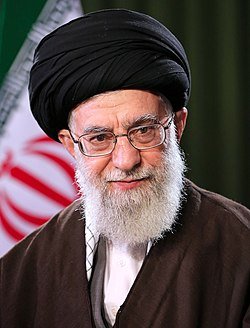Full Name: Ali Hosseini Khamenei
Date of Birth: April 19, 1939
Nationality: Iranian
Religious Title: Grand Ayatollah, Marja’
Current Position: Supreme Leader of Iran (since June 4, 1989)
Previous Role: President of Iran (1981–1989)
Ayatollah Ali Khamenei is Iran’s second and current Supreme Leader, the highest political and religious authority in the Islamic Republic. He assumed this position in 1989 following the death of Ayatollah Ruhollah Khomeini, the founder of the Islamic Republic. At the age of 50, he became the youngest person to ever hold the role. His leadership, now spanning over three decades, makes him the longest-serving head of state in the Middle East and one of Iran’s most enduring political figures, second only to Mohammad Reza Pahlavi in longevity.
Khamenei was born in Mashhad, a significant religious city in northeastern Iran. He was actively involved in the anti-Shah movement and was arrested six times by the regime of Mohammad Reza Pahlavi, eventually leading to a three-year exile. After the 1979 Iranian Revolution, Khamenei became a key political figure in the new Islamic Republic, closely aligned with Khomeini. In 1981, he survived an assassination attempt that left his right arm permanently paralyzed.
During the Iran–Iraq War, Khamenei played a prominent leadership role and formed strong ties with the Islamic Revolutionary Guard Corps (IRGC), a powerful military and ideological institution. He maintains control over the IRGC, whose top commanders are appointed and dismissed by him. The Guards have often been used to enforce domestic order and suppress dissent.
Before becoming Supreme Leader, Khamenei served as Iran’s third president from 1981 to 1989. He also became custodian of Astan Quds Razavi, one of the wealthiest religious foundations in Iran, a role he has held since April 14, 1979.
As Supreme Leader, Khamenei wields significant influence over all branches of government—executive, legislative, and judicial. He is also commander-in-chief of Iran’s armed forces and has final say on matters of foreign policy, the economy, environmental strategy, and national planning. He appoints key figures in the judiciary and media, and either directly or indirectly controls the selection of Guardian Council members—who are responsible for vetting candidates for presidential, parliamentary, and Assembly of Experts elections.
Although the Guardian Council has banned many reformist or moderate candidates in the past, there have been instances where Khamenei has intervened and reversed such decisions, underscoring his unrivaled authority in the Islamic Republic.
Khamenei is widely regarded as the ideological architect of Iran’s foreign policy and a central figure in the “Axis of Resistance”—a network of Iran-aligned groups across the Middle East. He continues to shape Iran’s domestic and international direction amid regional tensions and internal dissent.

